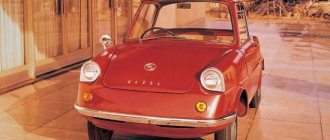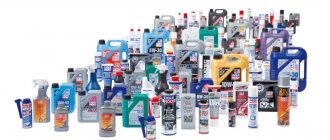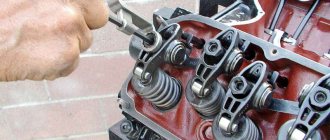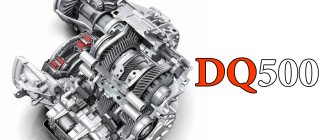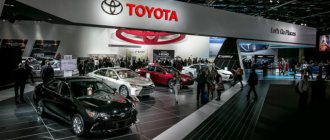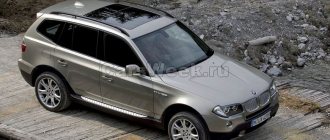Rated fuel consumption is one of the most informative and important characteristics of a car for the driver. This is what manufacturers often use to advertise and promote a particular new car model.
Among owners of used cars, it is considered acceptable to consume up to 10 liters of gasoline or diesel per 100 kilometers. In foreign countries, this indicator is indicated in miles, so recalculation into “native” units is often necessary. The fuel consumption tables available in this section of the site are considered very useful.
What does the fuel consumption indicator indicate? What does this characteristic mean? We are talking about hydrocarbon fuel consumption. For example, for an SUV the figure corresponds to 9.5 liters per 100 km. It is quite acceptable, primarily due to the weight and power of the car. The indicator can be reduced due to the following:
- use of energy recovery systems during braking;
- lightening the weight of the car when replacing body and chassis elements with innovative materials;
- engine improvements;
- replacing the exhaust system.
For new models, consumption of 6 l/100 km is considered quite a “cruising” figure, but it will be higher for heavy SUVs and pickups and lower for small hybrids. The necessary information can be found in the tables provided.
What to do if fuel consumption is higher than rated? If the car consumes more fuel and does not correspond to the nominal value indicated in the table, this means there is a malfunction. Experienced service center technicians will tell you how serious it is and how it can be eliminated. In some cases, tuning makes it possible to further optimize fuel consumption, but this is usually achieved by lightening the body structure or by replacing the engine. Professional automotive technicians can provide specific recommendations.
The fuel consumption of the Bugatti Veyron ranges from 23.1 to 24.9 liters per 100 km.
The Bugatti Veyron is available with the following fuel types: Premium Gasoline (AI-98), Gasoline AI-98.
History of creation: production cycle and life capsule
The citadel of the Bugatti concern is the Chateau Molsheim in France: here cars are not assembled, but created. And they do not appear in a sea of sparks from welding on a long snake conveyor, but as if by magic - they are born from unique parts and mechanisms developed in the best European factories. Elements that are intended for spacecraft are present at every stage of design and assembly. This is how modern Bugattis, which amaze even experienced racers with their power and speed characteristics, grow up in a quiet park under a sterile hood.
The Bugatti Veyron concept was presented quite early: in 1999, six years before the official show, the first prototype with a 630 hp engine was demonstrated in the Japanese capital. After 2 years, a model with a 1001 hp engine appeared at the Geneva Motor Show. For five long years, work continued to improve technical characteristics and power indicators. Such a long period was due to the fact that automobile designers had not yet overcome such difficulties. As a result, the maximum speed of the Bugatti Veyron was increased to 400 km/h.
From 2005 to 2011, 450 models were produced - 300 coupe versions and 150 roadster versions. The average cost of a hypercar started at $1.2 million.
Specifications
Power unit
What makes this French supercar move is a W-shaped turbocharged (4 turbine) 16-cylinder 8-liter power plant, which is capable of generating 1,200 horsepower (1,500 Nm). This allows the car to spend only 2.5 seconds to conquer the first hundred. The maximum speed limit was 407 kilometers per hour. The more powerful version boasts a speed of 415 kilometers per hour.
The fuel consumption of the Bugatti Veyron Super Sport is about 40 liters AI-98 in city mode, however, if you drive quietly, this figure can be reduced to 14 liters for every 100 kilometers. For the Super Sport version, larger turbines and an intercooler were installed, and the exhaust system was modified.
Interestingly, if you accelerate to the maximum speed limit, the fuel consumption will be almost 1 liter per kilometer.
Transmission
For such a powerful engine, engineers have provided a 7-speed Recardo robotic gearbox, which transmits all power to 4 wheels. It turns out that the “French” is equipped with a permanent all-wheel drive system. The internal part has 11 sensors that monitor the necessary engine cooling.
Chassis
As for the suspension, it is very good. It has sufficient rigidity and takes turns well, and also demonstrates excellent handling. An independent, spring type is used. The modernization affected the suspension, so the car is equipped with new shock absorbers and stiffer anti-roll bars.
The brake system boasts large ceramic ventilated disc mechanisms. As you can see, the technical characteristics of the Bugatti Veyron Super Sport deserve attention.
This model was also included in the Guinness Book of Records when it was able to accelerate to 431 kilometers per hour, which is the best result for a production vehicle.
Bugatti Veyron: technical specifications
The sports car has amazing design features. Even its designers will not name the exact number of technical innovations that were used to create the supercar. The most significant new products were:
- assembly of a structure from 3 modules;
- opening flaps on the bumper;
- active rear differential;
- presence of a rear wing.
The Bugatti Veyron consists of 3.5 thousand parts, and manual assembly of one car by a team of 8 specialists takes 15 days.
The Bugatti Veyron weighs 1888 kg - it’s not “slender”, but this does not affect its elegant appearance.
Technical characteristics of the Bugatti Veyron
Amazing technical characteristics required new developments in components and parts and the use of new technologies. Even its creators cannot say exactly how many technical innovations are implemented in the supercar. Among the most significant are: the assembly of the car from three modules, the rear wing, the active rear differential, and the opening flaps of the front bumper.
Rear wing
general information
- Country of stamp: France
- Car class - S
- Number of doors - 2
- Number of seats - 2 driver and passenger
- Passive safety features - 6 airbags
Dimensions
- Length - 4462 mm.
- Width - 1998 mm.
- Height - 1204 mm.
- Wheelbase 2710 mm.
- Ground clearance 120 mm. standard, in high-speed mode it decreases to 70 mm.
- The front track width is 1725 mm.
- The rear track width is 1630 mm.
- Wheels - 20 inches
Performance indicators
- Maximum speed is 407 km/h.
- Acceleration to 100 km/h - 2.5 s.
- Fuel consumption per 100 km. city/highway/mixed - 40.4/14.7/24.1 l.
- Fuel grade - AI-98
Engine
- Engine type - gasoline
- Engine location - central
- Engine capacity - 7993 cc. cm.
- Type of supercharging - turbocharging four turbines
- Maximum power - 1001 hp. / 736 kW at 6000 rpm.
- Maximum torque - 1250 N*m at 2200 - 5500 rpm
- Cylinder arrangement - W-shaped
- Number of cylinders - 16
- Number of valves per cylinder - 4
- Engine power system - distributed injection (multipoint)
- Compression ratio - 9
- Cylinder diameter and piston stroke, mm - 86 × 86
Transmission
- Gearbox: DSG robot with two clutches
- Number of gears - 7
- Drive type - full
Volume and mass
- Fuel tank volume - 100 liters
- Curb weight - 1888 kg.
- Total weight - 2200 kg.
Suspension and brakes
- Suspension - electronic control (3 modes)
- Front suspension type - independent, spring
- Rear suspension type: independent, spring
- Front and rear brakes - eight-piston calipers, ceramic ventilated brake discs
During testing, the engine showed a power of more than 3,000 horsepower, of which two-thirds was spent on heat costs. Therefore, it was necessary to develop a new cooling system, which included a titanium exhaust system, 10 radiators (three each for the engine and intercooler, one each for the gearbox, air conditioning, differential cooling and engine oil pump). Each radiator is assembled by hand from six hundred plates.
Engine Bugatti Veyron 16.4
The seven-speed robotic transmission for the Bugatti Veyron was developed over two years by 75 Ricardo engineers, who managed to achieve a shift speed of 150 milliseconds.
Gearbox Bugatti Veyron 16.4
After the concept car was shown, changing the design was prohibited; the layout and installation of units added additional difficulties to the designers. The manual assembly of each supercar from 3,500 parts took a team of 8 engineers 15 days.
Bugatti Veyron engine
The 8-liter 16-cylinder engine is equipped with 4 turbochargers.
The engine has a high coefficient of any resistance. Due to the all-wheel drive system, power is transmitted to all 4 wheels.
If you are wondering how many cylinders the Bugatti Veyron has, then there are 16 of them in the engine. This number indicates the wide capabilities of the power unit.
The power unit produces a torque of 1,250 Nm and a power of 1,001 hp. In reality, the power is even higher - almost 40 hp. higher.
If you are wondering how long it takes the Bugatti Veyron to reach 100 km/h, this speed is achieved in a record 2.5 seconds.
In the combined cycle, the Bugatti Veyron fuel consumption per 100 km is 24.1 liters. If you fill the tank with 95 grade gasoline, not 98, the engine will have a power of 850 hp.
The review states how much hp. in the Bugatti Veyron. This figure is above 1000: by the time the sports car appeared, it was believed that it was impossible to achieve this using non-car versions.
Basic speed indicators of the Bugatti Veyron
The Bugatti Veyron demonstrates excellent engine performance, which allows it to achieve the following indicators:
- Acceleration to 200 km/h - 7.3 seconds
- Acceleration to 300 km/h - 16.7 seconds
- Acceleration to 400 km/h - 32.6 seconds
Fuel consumption on the Bugatti Veyron at maximum speed is 100 liters per 100 km. But you can ride so dashingly only for 12 minutes. The Bugatti Veyron has an engine capacity of 7993 cm3. To maintain a comfortable temperature regime, the cooling system is equipped with 10 radiators.
Transmission
The engine is connected to the wheels by a 7-speed robotic DSG gearbox developed specifically for the Bugatti Veyron, developed by Volkswagen. One of the clutches operates with even speeds, the second - with odd ones. The system is designed in such a way that the speed is prepared in advance for switching, and the response time is 15 ms. The torque converter is responsible for changing gears. Manual mode is switched using the steering wheel paddles.
Suspension
The ride height is varied through the adjustable suspension. At normal speed, the ground clearance is 125 mm - this is the optimal height for comfortable movement in urban areas.
After the hypercar reaches a speed of 220 km/h, the shock absorbers rise and the ground clearance drops to 80 mm. When the maximum speed mode is activated, the ground clearance is reduced by another 15 mm.
The suspension demonstrates excellent handling characteristics for the Bugatti Veyron: it is quite rigid and copes well with turns. This is facilitated by a 2-link independent spring suspension located front and rear.
What kind of drive does the Bugatti Veyron have?
The sports car is equipped with a 4WD all-wheel drive system. It helps improve the vehicle's cross-country ability and allows the driver to confidently drive in different climatic conditions: in winter, on snow and ice, and in summer, in mud and sand.
Brake system
The car is equipped with exceptional carbon-ceramic ventilated brake discs. The braking system is equipped with 8-piston calipers and a wing. The tires are handmade and consist of several layers of rubber. A complete stop occurs in 10 seconds.
Safety
In automatic mode, the anti-roll bar reduces the power of the power unit. To reduce the risk of loss of control, lightning-fast braking occurs. The braking system, coupled with ABS, reacts very quickly when the wheel stops rotating. The units easily adapt to the pressure for a new start of torsion, which increases the ability to control the car when braking.
The sports version of the Bugatti Veyron is equipped with impact airbags for the driver and passenger. Seat belts with automatic tensioners in combination with AirBag provide excellent protection during a collision.
An original personal-made chip key is used as anti-theft protection. It is almost impossible to start the engine without a unique tool.
Technical features of the car
The car is designed for fans of high-speed driving. This fact is indicated by the car’s maximum speed indicator – 377 km per hour. However, the car owner should expect increased actual fuel consumption on the Bugatti. The Veyron consumes approximately 40 liters of gasoline in the urban cycle, which is quite a lot for a car. If mixed mode is turned on, fuel consumption is 24 liters; on the highway, consumption is only 14.7 liters. per 100 km.
Modification of equipment
Having looked at the photos of the latest sports car models, we can safely conclude that the appearance of Bugatti has changed. However, the main changes are worth noting in the configuration of the car.
Under the hood there are upgraded brake discs and calipers with 8 pistons.
Since the Bugatti Veyron’s gasoline consumption rate has increased per 100 km, the fuel compartment itself, or the tank in other words, has become larger. To accelerate to such speeds, a powerful engine is installed that can function under such loads.
Reduced air resistance
To reduce air resistance and thereby change gasoline consumption, the creators made the following adjustments:
- equipped the car with diffusers on the front bumpers;
- installed a spoiler that performs an aerodynamic function;
- a hydraulic suspension was installed, which reduces the landing of the car;
All these modifications do not reduce the average gas mileage of the Bugatti Veyron on the highway, but on the contrary, significantly increase it. So, in the city a car can consume 1 liter per 1 km.
You can reduce fuel consumption at maximum speed in the Bugatti Veyron by leaving local traffic. On the highway, the car will consume significantly less gasoline, since there will be no need to constantly slow down in traffic jams.
Exterior as an example of automotive fashion
The appearance of the hypercar, designed by Hartmut Warkus, has for a long time become a kind of cult for the creators of status cars. The developers borrowed the theme of voluminous wheel arches, a lowered windshield, a hollow hood, and headlights located parallel to the road. Only the oval-shaped air intakes and the design of the false radiator grille typical of a sports car were not copied.
The body of the Bugatti Veyron is aerodynamic perfection. But in terms of drag coefficient (up to 0.42), the body is inferior to many sports models. Solid dimensions do not disharmonize with the appearance.
Exterior that has become a model of automotive fashion
The exterior of the record holder for speed and cost became a model for designers of expensive sports cars for several years. Many models used the ideas of convex wheel arches, a sloping coupe roof, a sloping hood, and a sloped windshield.
Headlights parallel to the road have become fashionable.
Headlights
Only the characteristic shape of the false radiator grille and the oval air intakes behind the doors escaped copying.
Bugatti Veyron radiator grille
The body of the new Bugatti Veyron gave the impression of aerodynamic perfection, although in terms of these indicators (drag coefficient 0.35 - 0.42) it is inferior to many models. Solid dimensions do not prevent the low and wide work of the main designer of the project, Hartmut Warkus, from looking harmonious and elegant.
Bugatti Veyron exterior photo
All photos of Bugatti Veyron 16.4
Bugatti Veyron interior: luxurious minimalism
There are no unnecessary elements inside the sports car: every detail contributes to the image of the sports brand. There are few control buttons, and there are no touch screens. The oval console, made of polished aluminum, contains 2 controls for climate control and the gear selector.
The instrument panel has a semicircular design and is located under an oval visor with 5 traditional round dials, recessed into deep wells.
The asceticism of the equipment is compensated by expensive finishing materials: black carbon, polished aluminum, colored leather. The sports seats are designed for high speeds:
- multi-range adjustments;
- reinforced lateral supports;
- overall headrests;
- lumbar bolsters.
The interior of the sports car is stylish and extremely functional. Stylish accessories and small items are of high quality and elegant design.
Supercar interior: chic minimalism
There is nothing superfluous in the interior of the Bugatti Veyron; all the details work to enhance the image of a sports car. The dashboard does not have touch screens or numerous control buttons. The oval center console, made of polished aluminum, houses only two controls for the automatic climate control and the gear selector.
The semicircular instrument panel under the oval visor houses five traditional round dials in deeply recessed wells.
Speedometer Bugatti Veyron 16.4
The central place is occupied by the tachometer, the lower right corner is the speedometer marked up to 420 km/h, the lower left corner is the original power meter ending with the number 1001, the upper right corner and the upper left corner of the dashboard are occupied by the fuel level and oil, respectively.
Power meter Bugatti Veyron 16.4
The asceticism of the equipment is compensated by expensive finishing materials, among which the contrasts of polished aluminum with black carbon fiber and colored leather stand out. Two deep sports seats are designed for high speeds, they provide strong lateral support, lumbar bolsters, massive headrests, and multi-range adjustments.
Bugatti Veyron salon photo
All photos of Bugatti Veyron 16.4
How much does a Bugatti Veyron cost?
Traditional versions of the sports car cost 1 million euros (1.2 million dollars). Special and anniversary models went under the hammer at auction for more than $2 million.
Typically, owners of very expensive cars do not advertise the cost of their purchases. There are only about 10 hypercars in Russia.
Due to limited production, prices for such models do not become lower, but rise. The Grand Sport Vitesse version was sold for a record $2.9 million
.
Let's sum it up
Today, the Bugatti Veyron no longer has the title of the fastest car in the world, but remains the most recognizable and reputable brand that has left a bright mark in the history of the automotive industry.
A sports car is suitable for wealthy people who have good capital, which is necessary not only to purchase almost the most expensive car in the world, but also for its further operation and maintenance.
Cars of this brand are produced mainly to order. They are suitable for short leisure trips as they require ideal roads. But in any case, the Bugatti Veyron is, of course, a phenomenon of the automotive industry that has left an eternal mark on museums and the hearts of many car enthusiasts around the world.
096
